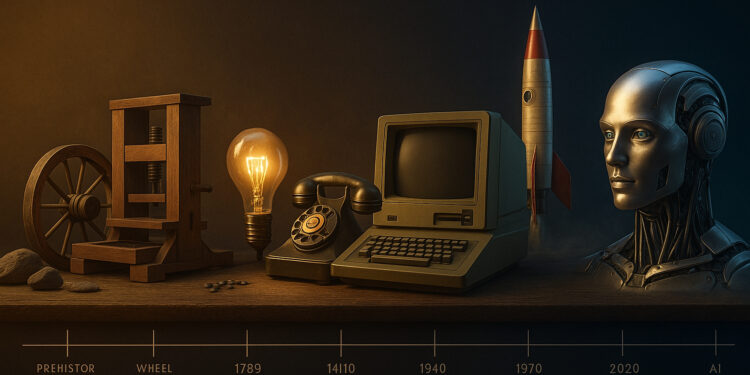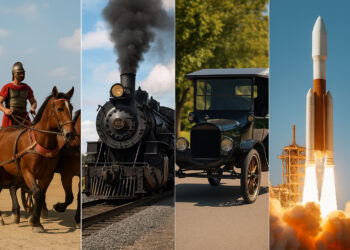From the invention of the wheel to the rise of artificial intelligence, human history is defined by our ability to innovate. Technology has always been more than machines—it’s the story of how creativity, curiosity, and necessity drive progress. Tracing this timeline reveals not just inventions, but the evolution of human thought, communication, and connection.
1. The Dawn of Tools and Early Machines
Our journey begins over 2.5 million years ago with stone tools—the earliest form of technology. These simple implements allowed early humans to hunt, cook, and build shelters. Fast forward to around 3500 BCE, and the invention of the wheel revolutionized transportation and trade.
By 1200 BCE, the Iron Age began, giving rise to stronger tools, weapons, and agricultural advancements that supported growing civilizations.
2. The Age of Discovery and Mechanization
Between the 15th and 18th centuries, the world entered an era of exploration and scientific awakening. Johannes Gutenberg’s printing press (1440) spread knowledge faster than ever before, fueling education and innovation.
Then came the Industrial Revolution (1700s–1800s)—steam engines, textile mills, and mechanized production reshaped economies and societies. Invention became a way of life, and innovation moved from the workshop to the factory floor.
3. The Electrical and Communication Age
The 19th and early 20th centuries sparked new forms of connectivity. Electricity, telegraphs, and telephones transformed how humans lived and interacted. By 1879, Thomas Edison’s light bulb illuminated cities, and by 1901, wireless communication became a reality with Marconi’s radio.
The automobile, airplane, and assembly line soon followed, bringing speed and efficiency to modern life.
4. The Digital Revolution
The mid-20th century marked the birth of computing. Alan Turing’s early computers, transistors, and microchips paved the way for the personal computer revolution. By the 1990s, the internet connected the world, transforming communication, commerce, and culture.
The early 2000s introduced smartphones, cloud computing, and social media, making technology not just a tool—but a daily companion.
5. The Era of Artificial Intelligence and Beyond
Today, we live in an age of rapid innovation powered by AI, robotics, biotechnology, and renewable energy. Machines learn, adapt, and assist in ways once thought impossible. The boundaries between science and imagination continue to blur as humanity explores quantum computing, space technology, and neural networks.
Conclusion
The history of technology is a reflection of human ambition—a story of progress shaped by problem-solving and creativity. Each invention, from stone tools to smart devices, tells a story of people striving to make life better, faster, and more connected. The future of innovation lies not just in machines, but in our endless drive to imagine what comes next.












